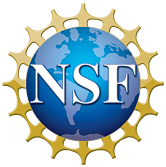Marine cloud brightening climate intervention is simulated by CESM2 under a susceptibility-based strategy under SSP2-4.5
To Access Resource:
Questions? Email Resource Support Contact:
-
datahelp@ucar.edu
Temporal Range
-
Begin: 2015-01-01T0000+00 End: 2070-01-01T0000+00
| Resource Type | dataset |
|---|---|
| Temporal Range Begin | 2015-01-01T0000+00 |
| Temporal Range End | 2070-01-01T0000+00 |
| Temporal Resolution | N/A |
| Bounding Box North Lat | 90.0 |
| Bounding Box South Lat | -90.0 |
| Bounding Box West Long | -180.0 |
| Bounding Box East Long | 180.0 |
| Spatial Representation |
grid |
| Spatial Resolution |
125000.0 m 1.25 degree |
| Related Links | N/A |
| Additional Information | N/A |
| Resource Format |
NetCDF |
| Standardized Resource Format |
NetCDF |
| Asset Size |
58769616.567 MB |
| Legal Constraints |
Creative Commons Attribution 4.0 International License |
| Access Constraints |
None |
| Software Implementation Language | N/A |
| Resource Support Name | N/A |
|---|---|
| Resource Support Email | datahelp@ucar.edu |
| Resource Support Organization | N/A |
| Distributor |
NSF NCAR Geoscience Data Exchange |
| Metadata Contact Name | N/A |
| Metadata Contact Email | datahelp@ucar.edu |
| Metadata Contact Organization | NSF NCAR Geoscience Data Exchange |
| Author |
Chen, Chih-Chieh Richter, Jadwiga H. Lee, Walker R. MacMartin, Douglas G. |
|---|---|
| Publisher |
NSF National Center for Atmospheric Research |
| Publication Date | 2024-02-13 |
| Digital Object Identifier (DOI) | https://doi.org/10.5065/MRH9-B809 |
| Alternate Identifier |
d314006 |
| Resource Version | N/A |
| Topic Category |
climatologyMeteorologyAtmosphere |
| Progress | completed |
| Metadata Date | 2025-10-09T01:18:26Z |
| Metadata Record Identifier | edu.ucar.gdex::d314006 |
| Metadata Language | eng; USA |
| Suggested Citation | Chen, Chih-Chieh, Richter, Jadwiga H., Lee, Walker R., MacMartin, Douglas G., Kravitz, Ben, Tye, Mari. (2024). Marine cloud brightening climate intervention is simulated by CESM2 under a susceptibility-based strategy under SSP2-4.5. NSF National Center for Atmospheric Research. https://doi.org/10.5065/MRH9-B809. Accessed 05 December 2025. |
Harvest Source
- ISO-19139 ISO-19139 Metadata

